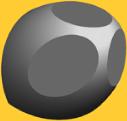Richard M. Christensen |
||
|
||||
Recent Additons |
||||||
Key Junctures |
||
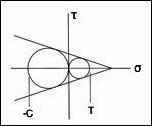 |
||||
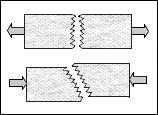 |
|||||||||||
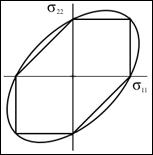 |
|||||||||||
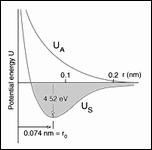 |
|||||||||||
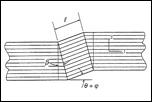 |
|||||||||||
Can Atomic/Nano Scale |
|||||||||||
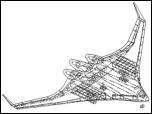 |
||||||
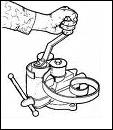 |
||||||
 |
||||||
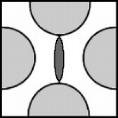 |
||||||
 |
||||||
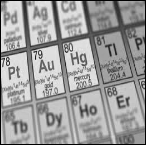 |
||||||
 |
||||||
 |
||||||
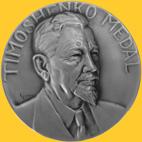 |
||||||||
 |
||||||||
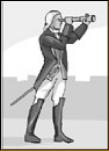 |
||||||||||
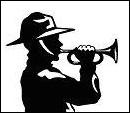 |
||||||||||
Timoshenko ![]()
 On November 19, 2013 Richard M. Christensen was awarded the Timoshenko Medal at the Applied Mechanics Banquet of ASME. Below is his acceptance speech.
On November 19, 2013 Richard M. Christensen was awarded the Timoshenko Medal at the Applied Mechanics Banquet of ASME. Below is his acceptance speech.
Fellow Mechanicians:
Thank you to all of you for this fine honor.
For sure I have been around a long time and I have seen it all, so I’ll give you some impressions of what I have observed over the long haul in the world of applied mechanics. Let me start by mentioning that I have a technical paper coming out in Journal of Applied Mechanics in the January 2014 issue. This was kindly facilitated by the technical editor, Yonggang Huang. If you wish, please consider that as my formal speech, but no one wants to hear about equations tonight.
Instead I’ll talk a little about technical generations. Each generation has its own character and its own challenges. What is a generation if not a collection of workers, individuals. So this is really about individuals. It’s not so much about exactly what each of them did, but more about the how and the why they did what they did. What was their propulsion system, their energy source?
Yes, people are ambitious and everyone likes recognition, but that’s only about 5% of it. There’s got to be something more that supplies the sustained drive. And its probably uniquely different in scientific research than it is in other avenues of endeavor.
Let’s start with Timoshenko and his generation. Because Timoshenko was at Stanford in the latter part of his career, we’ll start right there, at Stanford. These days engineering at Stanford is usually closely identified with computer science and electrical engineering. The engineering library is housed in a splendid new building, made possible by silicon valley donations. Could you guess what is featured in the engineering library at Stanford? There is one thing that is the focal point in a dominating setting. It is the collection of Timoshenko’s personal library and his private papers. You stand there looking at it and it just about feels like being on sacred ground.
One day I went over to the library and got them to unlock the big imposing bookcases for me. They are under lock and key. Somehow I don’t think Timoshenko would have appreciated requiring a username and password to access his library. There is a dedicated, particular librarian at Stanford, Sarah Lester, who is in charge of the entire Timoshenko collection. Any of you Timoshenko history scholars could contact her directly. So I browsed around for a while in his first edition books and original manuscripts. For example in his elasticity book with Goodier, penciled in the margin beside a particular equation was a very neat note that said that Mindlin says the coefficient should be 2. Mindlin was a very prominent mechanician in his own right. I’m sure that coefficient got resolved or corrected in later editions. I’ll now note a few of the things that I saw in the Timoshenko collection.
In one particular source, it says that “Timoshenko was offered a Professorship in Mechanical Engineering and began teaching at Stanford in the fall of 1936. It should be noted that Stanford thought of offering Dr. Timoshenko a professorship in 1925 but at that time he was not as well known and it was felt that a man past 45 was a questionable risk.” Timoshenko would have been 47 at the time. When they finally saw the light and hired him he was 58. You can imagine that when I read this it made me squirm a little.
Timoshenko wrote his dissertation under the great Prandtl, in Germany. Prandtl was famous because not only did he develop boundary layer theory for fluid mechanics, he also was a highly recognized contributor in solid mechanics. Of course one could turn that around and say that Prandtl was lucky to have the great Timoshenko as a student. In later years Prandtl told Timoshenko that he was a very good student, he didn’t bother him. Some things never change. Timoshenko didn’t need or want any direction from Prandtl. He knew exactly what he wanted to do and he probably was quite sure where he was going as well.
In 1927 Timoshenko and George Eaton, who was his boss at Westinghouse Electric, formed the Applied Mechanics Division of ASME. Before that time there were no divisions or sub-groups in ASME. To make such a proposal to ASME must have been a very big deal. The working title for the proposed new entity was:
“The Division of Mechanics, Physics and Applied Mathematics”
Apparently that name didn’t fly with ASME and the name of the new sub-group became the Applied Mechanics Division. Interestingly the originally proposed name would have fit very well with exactly what we do today. Sometimes the field is now called theoretical and applied mechanics, sometimes continuum mechanics, sometimes engineering mechanics, and sometimes just mechanics. I’ll always refer to it as applied mechanics tonight because we’re at the Applied Mechanics Banquet.
At the risk of over-generalization I would say that Timoshenko epitomized his generation and his generation was more about careful, scholarly consolidation than anything else. But consolidation should not be confused with minimization or small scale goals. However you define it, Timoshenko himself sharply stood out and still stands out as the consummate technical educator. By the measures of his time, that was the ultimate contribution.
Then, after Timoshenko’s time came the next generation. They were ushered in and they certainly created a large and forceful presence. They set out to revolutionize the field. Did they or didn’t they succeed in that? Let’s defer judgment on that for a bit, first I’ll tell you about just a few of the captains leading the charge. These will be simple, quick word pictures that hopefully make these leaders a little more than just some distant, vaguely remembered names. When this presumptive revolution started I was a young nobody intently watching the proceedings from the back bench.
Eli Sternberg was lean, neat, formal, and precise. His lectures were works of art and his research papers were just about perfect too.
Ronald Rivlin couldn’t have been more different. He was rumpled, exuberant, and more than a little flamboyant. Rivlin was turned on every minute of every day, high intensity.
Eric Reissner was fiercely protective of his fine contributions and his reputation. But if that wasn’t on the line, he could be charming and urbane.
Clifford Truesdell cultivated the image of the ultimate scholar and he did a pretty good job of it.
Dan Drucker did his far reaching work when he was a young man and then went on to commit much of his time and energy to the benefit and furtherance of applied mechanics. His was the purist form of professional dedication to applied mechanics that I ever saw.
And there were many, many other outstanding contributors than just those above. Not surprisingly many of those people had outsized egos. Were those egos justified, deserved? Maybe that’s another way of asking if they succeeded in revolutionizing the field. No doubt there are widely diverse opinions on this. I can only give you my view in the matter. I think they succeeded brilliantly. It seems to me they were an all time, all star generation.
As the years went by I got to know most of those people quite well. I didn’t follow in the technical direction of any of them because I always had my own theoretical interests and activities, but I was closely aware of their work. Was there one or more of those many outstanding people who contributed above all others?
For me there was one who earned and deserves applied mechanics immortality. That would be Rivlin, Ronald Rivlin. His mathematics was completely rigorous, his insight first rate, and for the most part his results were surprisingly general, in an extremely difficult field, nonlinear elasticity. Rivlin picked up the whole field in his hands and moved it forward some. He moved it as much or more than anyone before him and more than any of his contemporaries. Ronald Rivlin was extraordinary.
Then came my generation. It’s probably not appropriate for me to say much about my own generation. We’ll check back later for an independent appraisal on that. In that spirit I also won’t say much about myself other than to mention my latest work. It’s a new book from Oxford entitled The Theory of Materials Failure. My general work and background are available elsewhere. However, I can’t pass by my generation without saying something special about one particular person. There’s one in it who stood for the very best. That is Jan Achenbach. He was the leader, and what a leader he was and is.
Next let’s look at the generation following my generation. Don’t ask me how you define technical generations, you just feel it. This generation is really something, and they were right from their beginnings. They were going full bore right out of the gate. I don’t need to name names but there is a tremendous line up of very creative, very productive people. When all is said and done I think this generation following mine will be right up there with the incredible generation preceding mine. More will be said shortly of one very special person from this generation.
Now we come to the emerging, concurrent generation, maybe that’s most of you. Its not really a generation in the usual sense, rather its simply the state of current activities in applied mechanics. I think of all of you, or most of you, as the nano-scale whiz kids. Everything is nano-scale these days and its a very exciting time. You smart young people are probing what had been unknown territory until now. You are exploring the physical interactions at extremely small scales and an avalanche of new results and new understandings are emerging. I wish I could turn the clock back and be right in the middle of it with you.
Is it useful in general to think in terms of technical generations? Probably not, probably I am the only one who thinks that way. But at least it serves the present purpose of framing applied mechanics in these more modern times since its classical beginnings.
As time passes beyond that of a particular generation, the individual contributions and accomplishments blend in and recede into the fabric of the technical progress of that period. But there usually are a few landmark achievements (people) that rise above and transcend generations. Timoshenko and Rivlin are two very different such examples. Contributing and competing at that level requires a supreme commitment and motivation, far beyond any simple matter of ego. They had it, they had a vision for the future. I would like to finish with one or two more such examples. These comprise additional, modern examples of the vitality of applied mechanics and some of its truly exceptional people scattered across the generations.
In the 1960’s I was the chair of what was then called the Junior Honors Committee of the Applied Mechanics Division. It was the lowest level committee and it only made recommendations to higher committees for outstanding papers in the Journal of Applied Mechanics by young authors under a certain age. We went through the papers of the preceding year and there was one stunning paper by a young author. It would have been the single most outstanding paper regardless of the age of the author. Our strong recommendation went up the line and it was successful. The young author’s name was James R. Rice. Jim Rice received the Henry Hess Medal in 1969 for his fracture related paper on the J-integral. What a seminal paper that was, many thousands have read it and used it to great advantage. And look at where Jim Rice’s career has gone and what he has done. You have to respect a field that gives a young person an opportunity, a recognition, and then utilizes that marvelous talent forever after. That’s applied mechanics for you.
The other example is in statistics. Most people don’t associate statistics with applied mechanics. But that is gradually changing. These days Bayesian statistics is much in style. Its an attractive formalism but it may or may not deliver the goods in some critical situations. For example for a future manned mission to Mars the fuel and oxidizer would have to be stored in pressure vessels for the return voyage. These pressure vessels must be certifiable to a 10 to the -6 (man safe) reliability level. Broad formalisms are not adequate to grapple with that problem. Specific, concrete probability distribution functions are required. There was one person who was far ahead of his time in recognizing and appreciating these types of problems, and he nailed it. That would be Wallodi Weibull. He worked on such problems in the 1930’s and 40’s and finally published the resolute finale in 1951 in the Journal of Applied Mechanics. The Weibull distribution offered then, offers now, and always will offer utmost utility and clarity for materials failure problems. It was a remarkable achievement. His paper reads as well today as it did 60 years ago.
By the way, do you notice how the Journal of Applied Mechanics keeps coming up again and again. That’s what flagship journals do.
Applied mechanics has a long and a grand tradition of providing results that are precise, that are correct, and most of all that are deeply rooted in the fundamentals. Put that together with the intellectual stimulus and drive needed to push beyond the expected, the conventional, and you have our field’s complete and priceless heritage. Such a special past has to promise much for the future. But the future is in your hands and I hope all of you have as much satisfaction and pleasure with applied mechanics as I have had.
There are many individuals whom I should like to acknowledge. To keep the list below an hour or two let me emphasize the present. Zdenek Bazant and George Dvorak are good friends and colleagues of long standing. Acknowledgment is due my many friends at Stanford University, especially George Springer and Steve Tsai. Yasushi Miyano and I have enjoyed cooperating on research for a long time. Yapa Rajapakse has always been a supportive friend and colleague..
Part of my family is present. Many of you know my wife Kristy so she needs no introduction. Next to her is our son Kurt. This is his first and probably his last ASME since he lives in a different technical world. He is a senior editor at C-Net. He is my webmaster, that is to say he is very helpful in putting my technical website <FailureCriteria.com> onto the internet. It wouldn’t happen without him.
Finally let me say how deeply appreciative I am of my many friends in applied mechanics, past and present. Thank you so very much.
Richard Christensen
